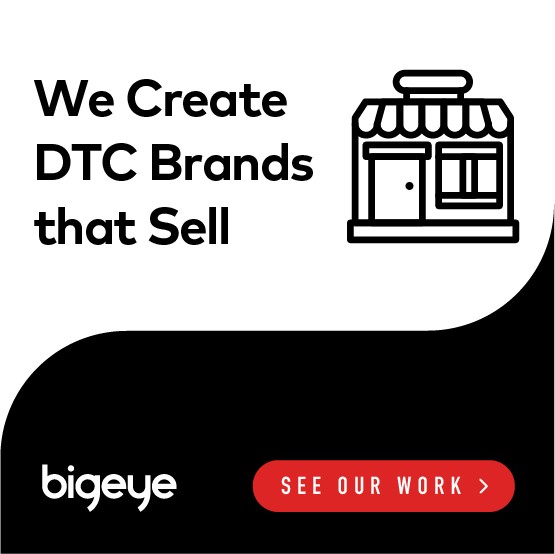
As the skincare market continues to expand, the time is right for starting your own company. You’ll never reach the level of success you desire, however, without establishing a disruptive brand that stands out from the completion.
A 2019 study by the independent market research company the NPD Group singles out the prestige beauty market as one of the fastest-growing sectors in United States retail sales with an annual growth of 6 percent. And, with an annual growth of 13 percent, the skincare category stands out as a particular achiever, comprising a full 60 percent of the prestige beauty market’s total industry gains.
“If I had to use one word to characterize the state of the U.S. beauty industry today, it would be disruption,” says NPD Group executive director and beauty industry analyst Larissa Jensen. “Whether we look at categories, brands, or retailers, there are sweeping changes taking place in the market landscape.”

Jensen proceeds with a warning to skincare entrepreneurs everywhere, stressing the fact that “brands and retailers must not only be cognizant of these transformations and act upon them, but identify new white space opportunities to captivate consumers and further differentiate themselves from the crowd.”
Leveraging Areas of Disruption in Skincare Industry
Prospective skincare company owners and chief executive officers should pay close attention to the specific growth areas within the skincare industry if they want to capitalize on areas of disruption and establish a distinct, unique, and valuable brand.
The booming popularity of natural beauty products, for example, represents a dramatic sea change in terms of the qualities and characteristics that customers have come to expect. Reflecting this change, the top contributor to the $5.6-billion skincare industry are natural skincare brands. The NPD Group reports that natural skincare products accounted for more than one-quarter of annual skincare sales, up 23 percent from the previous year.
The NPD Group report goes on to identify lip treatments, toners/clarifiers, facial sprays, and alphabet creams as the fastest-growing skincare product classifications. Customers are also increasingly purchasing skincare for the body, protective sunscreens, and self-tanning products.
Legal Requirements to Operate a Skincare Business
Before starting a skincare company, it is absolutely imperative that you understand all the licensing and regulatory issues that you will face. In general, the legal requirements that you must meet to operate a handmade cosmetics business are similar to the legal requirements that other small business must meet. However, as part of the cosmetic/beauty industry, you must ensure that your skincare product(s) pass muster with the US Federal Drug Administration (FDA).
Regulated by the FDA under the Federal Food, Drug and Cosmetic Act, all skincare products must be deemed safe for consumers for indicated conditions of use prior to their release. They also have to be labeled properly.
It isn’t against the law to make cosmetics in your home, but it is your responsibility to ensure that this is accomplished safely. In his article “How to Start Your Own Line of Skin Care,” Houston Chronicle contributor Michael Flanagan suggests accessing the FDA’s Good Manufacturing Practice Guidelines/Inspection Checklist before designing your manufacturing space. This is the best way to prepare this space for its required FDA on-site inspection.
Manufacturing Your Skincare Products
The Houston Chronicle article goes on to offer a number of skincare product manufacturing tips including cutting down on overhead costs by looking for bulk suppliers to secure all necessary raw ingredients. It recommends accessing online distribution networks such as MakingCosmetics and Admix to meet both your supply and equipment needs.
If you choose to start your business with a manufacturing space on your residential property, you can often use your kitchen as your main hub of activity. The equipment that you will need depends entirely on the type(s) of skincare product(s) that you want to make. Skincare companies that plan to make clay facials, for example, can probably begin by using existing household mixing bowls and spoons. Those who want to make soap, however, must first buy soap molds and a few other essential pieces of equipment.
Skincare Company Marketing
No matter how great your skincare products happen to be, you won’t get far in the skincare sector without a comprehensive and outstanding marketing campaign. Here are just a few elements that you’ll want to include in your unified skincare company marketing efforts.
- An official website – In virtually any industry, a high-quality website is absolutely essential. Your website should reflect your company’s core values and commitment to excellence. Even if you don’t plan to sell your skincare products online, customers will inevitably turn to your website for answers to important questions as well as information about your company and what it does best.
- A strong social media presence – Reach your target consumer base on the social media platforms that they already frequent. Depending on your target demographic this might mean maintaining compelling, informative, and up-to-date company pages on multiple platforms including Facebook, Instagram, Twitter, and Snapchat. Social media outreach is a great idea for a wide range of reasons, but its ability to engender both consumer-to-company and consumer-to-consumer interactions is simply unparalleled.
- Email newsletters – As a skincare company, you’ll want to turn each buyer into a repeat customer. Email newsletters are a great way to drive consumer loyalty. Although you don’t want to bombard customers with constant messages of little value, occasional newsletters can be a great way to make customers feel valued. Share content that will command attention, announce the release of new products, and motivate consumer action with various sales and promotions.
- Non-digital marketing efforts – Don’t forget that the majority of people still buy their skincare products in brick-and-mortar stores. Consider visiting regional beauty salons, spas, and health/beauty stores to offer free samples. If these establishments express an interest in buying your products, you should provide them with attractive wholesale pricing. Other traditional sales techniques that continue to work well include the staging of at-home skincare parties.
Skincare Branding
While all of the techniques outlined above can effectively reach your target demographic of existing and prospective customers, you simply won’t get far with a bunch of disorganized and unconnected advertising efforts. In order to be truly successful, your company must unify all of its marketing activities under the banner of an overarching brand that is both captivating and exceptional.
Your branding efforts must begin with the creation of an effective company name and logo. Don’t take these steps lightly! Both your name and your logo must be carefully designed to resonate with your audience.
Keep your name simple, catchy, and easy to spell, Pay close attention both to how your name looks when read and to how your name sounds when spoken. If possible, choose a name that conveys some sort of strategic meaning.
The uniqueness of your name is also a paramount concern. To see whether or not a favored name is already in use, check online with the United States Patent and Trademark Office.
Your name and logo should lead the way when developing a brand that projects a distinct and desirable set of characteristics and values. These specific characteristics and values will depend entirely on your target demographic.
For example, a “macho” brand is perfect for companies in the fast-growing men’s skincare product sector. Other skincare companies have found success with socially conscious branding messages and company affiliations, offering products that are responsibly sourced and supporting a broad spectrum of charitable causes.
Best Skincare Packaging
A recent report by the leading corrugated packaging company WestRock shows that more than four in five American have tried a new product due to its packaging. And packaging is particularly important in an overcrowded skincare sector that has products desperately competing for attention on store shelves everywhere.
Like all other facets of your marketing operations, your unique product packaging must align with the characteristics and values of your brand as a whole. This is absolutely essential if you want to connect with your chosen consumer demographic.
Although no two skincare companies should wrap their products in similar packaging, there are a few universal guidelines that companies must generally keep in mind. For example, a highly important part of presenting a professional image is ensuring that all your brand-name products follow a constant design style.
Skincare Video Production
In today’s marketplace, a business that fails to use video as part of its comprehensive branding and advertising efforts is bound to fall behind. The 2020 State of Video Marketing Survey by Wyzowl reports that 85 percent of companies use video as a marketing tool and that 92 percent of marketers who use video rely upon it as “an important part of their marketing strategy.”
When you stop to consider the fact that beauty product videos are the most searched-for video type on YouTube, the tremendous potential of video marketing in the skincare sector should be immediately obvious. In addition to producing and releasing traditional video ad spots, your skincare company can benefit from motion graphics infomercial content, instructional how-tos, and recorded customer testimonials.
Get Professional Guidance
Unless you happen to be a seasoned marketing professional, you will want to secure the assistance of a professional skincare marketing agency well before establishing your company and beginning to distribute your products. At Bigeye, we know the supreme importance of founding your skincare company with an extremely powerful, unified organizational image and a highly compelling, targeted marketing message.
Let us help you launch your brand right the first time, so you don’t have to contend with the significant cost, hassle, and wasted time that go hand in hand with subsequent company rebranding efforts.



